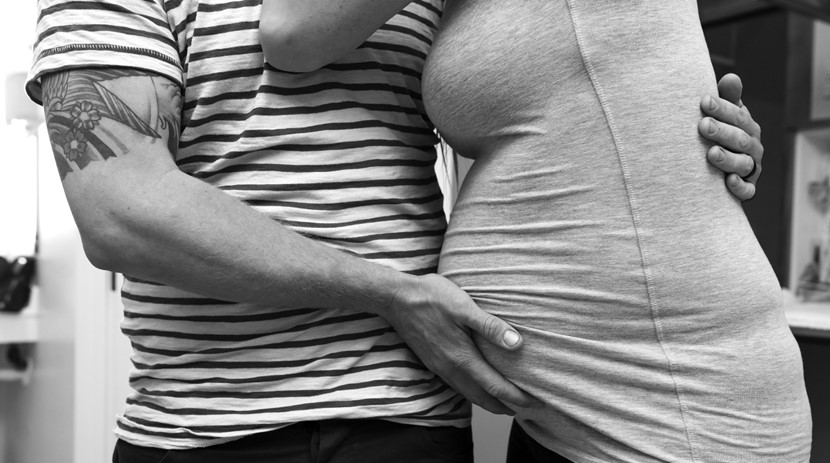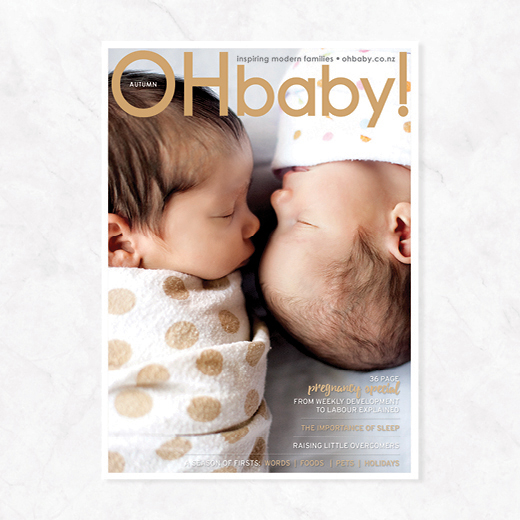Labour of love: what is labour REALLY like?

You’re in labour!' It's a loaded statement, but what does it actually mean, and what can you expect? Midwife Abbe Cherry explains.
What is labour like? This is actually a really hard question to answer. Labour is such an individual experience; we all labour differently and there are so many factors that can affect the way we birth. As midwives we are asked this question a lot, but the truth is the process of birthing your baby can be a complicated one that weaves down many pathways until that magical moment when you hold your baby in your arms for the first time.
So let’s start with the basics. Labour is broken down into three stages:
Stage 1: Your cervix softens, shortens and opens. Stage one of labour is completed when your cervix is fully dilated, which means it is open to 10cm.
Stage 2: This stage covers the time from full dilation until the birth of your baby.
Stage 3: The birth of your placenta.
Game on
A typical labour may start in many ways. You may have what’s known as a ‘show’ (a sticky, often blood-stained, mucousy vaginal discharge); your waters may break; or you may have back pain, diarrhoea, or not feel anything at all.
The most obvious sign that your labour is starting is the feeling of uncomfortable tightening, a little like period pain, happening low down in your belly. Your body is warming up and preparing itself for the serious stuff later on. This is called latent or early labour and is the beginning of the first stage. Your cervix is becoming soft, short and starting to open. For some women this stage can take a few hours, some a few days, but the average first-time-mum will usually experience around 24 hours of these niggly pains.
This is the time to rest! Know your baby is getting ready to meet you and be prepared for the next stage by getting enough sleep, eating well and drinking lots of water.
It is so tempting to start pacing the hallways in excitement – your baby is finally on the way! However, one of the best ways to ensure the next stage goes as smoothly as possible is by going into it with energy and a calm mind – this is impossible if you are sleep-deprived.
Getting serious
From here you enter the active phase, or established labour. Things are about to get a little tougher. Those period-type pains are going to increase in strength and frequency. You may find you can no longer talk through the contraction and you may need to rock or change positions to help with the pain. Your baby’s head is starting to descend and put more pressure onto your cervix, and changing positions helps your baby to navigate its way through the bones in your pelvis.
Typically for first babies you could expect this stage to be around twelve hours.
This is the time to contact your LMC so you can formulate a plan together. Some women opt to be seen at home so they can continue to labour in comfort, and if it turns out that you are not as progressed as you expected, you have saved yourself an uncomfortable car journey.
Once you are settled in the place you hope to give birth, your LMC will be checking on you and your baby regularly, ensuring your labour is progressing well and the baby is coping. This will involve listening to the baby’s heartbeat; taking your blood pressure, temperature and pulse; and vaginal examinations to check the dilation of your cervix. If your pregnancy has deviated from normal, or if you are high risk in some way, your baby may require continuous monitoring. In this situation you’ll be connected to a machine that monitors your baby’s heart rate for the entirety of your labour. Two monitors will be strapped to your belly, or occasionally directly attached to the baby’s head (foetal scalp electrode). Monitoring restricts your movement, and if it’s a low-risk birth, there is no research to support continuous monitoring.
As the labour intensifies, using techniques you have learned in your pregnancy will help you cope. Positional changes, water, TENS, massage, yoga and music, to name a few.
By this point you should also be able to rely on the in-depth conversations you have already had with your LMC about your birth plan, and the pros and cons of pain relief in labour. During labour you will be busy coping with your pain, so it’s important that you take the time beforehand to make an informed choice, so you don’t have to make difficult decisions while under duress.
Your birth plan may include using a pool as your main pain relief option, or pharmaceutical pain relief options such as entonox (gas and air), pethidine or an epidural. At this point in your labour, you can discuss with your LMC whether it is a good time to start your preferred choice of pain relief.
At any point in this process, the water surrounding your baby may break or your LMC may discuss reasons for breaking the waters for you. This is done during a vaginal examination, and while uncomfortable, it is not usually painful. This may be done if your labour has slowed or your LMC is concerned and wants to check the colour of the fluid.
Exit strategy
If all goes to plan, your body will start to transition into the second stage. Your cervix will be almost fully open, your baby’s head will be moving lower into the vagina and most women will start to feel the urge to bear down or push during strong contractions. Vomiting, nausea, feeling scared and overwhelmed are all normal. Transition often doesn’t last long, but if you have managed without pain relief this far, you will now be begging anyone that passes by (be it a cleaner, your husband or your midwife) to give you all the drugs they’ve got. Also normal! Now, saying the pain goes away when you push would be a lie, however, it is definitely more manageable. You get to work with it. Knowing you are close to the finish line really helps.
It is very normal to take up to two hours to push a first baby through the birth canal. Changing positions regularly will be helpful. Try hands and knees, standing, squatting or leaning forward over a Swiss ball. Try these positions out while you are pregnant to see what feels right for you – however, this may change when you are in labour.
Most women feel an extreme burning sensation as the head begins to stretch the skin around the entrance of the vagina (perineum). This sensation, known as crowning, may be overwhelming and scary. Our bodies are designed to birth babies and this skin has the ability to stretch to allow the head to be born. Touching your baby’s head at this stage may help you to connect to the moment and realise how close you are to the finish line. Letting the baby come slowly at this point will give your body time to stretch, and this is when that yoga breathing may really help!
Very occasionally, to speed up the delivery if there are concerns about your baby’s heartbeat or to prevent a tear, your LMC may suggest an episiotomy – a cut made to the perineum. This will be done under local anaesthetic and would be sutured after the birth of your baby and placenta.
Once your baby’s head has been born, most of the hard work is done! The rest of the baby is born reasonably easily, usually in the next contraction or two. This can be a scary time for your birth partners as the baby's head can often look quite purple and sometimes baby will start making noises or even have a look around!
You’ve done it! Your baby will be lifted onto your chest for skin-to-skin contact. This time is a very valuable time as skin-to-skin contact is a key part of bonding and also helps your baby find her way to the breast. Yes, it’s time for her first feed! Ideally this feed should happen within the first hour of birth.
Victory lap
The third stage of labour happens after your baby is born as you deliver your placenta.
There are two ways to manage the third stage: physiological – your body doing it naturally; or active – where you are given a drug (ecbolic) to speed up the delivery of the placenta. The benefit of having a physiological third stage is that delayed cord clamping allows for extra blood flow to be delivered via the placenta to the baby, until the placenta has detached from the wall of the uterus. There are some situations when it is safer to have active management of the third stage, for example, it can lower the risk of heavy bleeding, and it is advisable to talk with your LMC while pregnant to discuss the best option for you.
Plan b
At any point throughout these stages, things can deviate from normal. Early in the journey your baby may be breech and you may opt for an elective Caesarian section. Your waters may break but your labour not start, making it necessary for an induction of labour. You may be having a planned induction because of gestational diabetes, a small baby, or being very overdue.
This process is different with every baby. A birth that may look like it will be complicated, for example a woman with high blood pressure and booked for an induction may go into labour herself before that date and have an uncomplicated natural birth. A woman with an uncomplicated pregnancy may labour and have foetal distress and end up with a C-section before the second stage. It is a process with the same goal, however, it can take so many different paths to get there, most of which you have very little
or no control over.
What you can do
While some aspects of labour are out of your control, there are things you can do beforehand to help your body prepare:
● Eat well
● Stay within your recommended weight-gain range
● Stay well hydrated
● Stay fit and active in your pregnancy
● Complete good quality antenatal classes
● Look into classes such as yoga or Pilates
● Use positional techniques in your last trimester to help baby into a good position
● Get rest and support, especially in early labour
● Choose your birthing companions wisely. You want people around you who are positive and will support your plan
● Try to stay positive and relaxed
The mode of delivery for your baby is not what is important. Over my years of practising as a midwife, I have come to realise that the ‘type’ of birth you have does not always equal how you feel about the birth after the fact. Women who describe their birth as a positive event are not necessarily the ones who had a textbook birth, but the ones who felt in control, who had the time to make decisions about their care and had good support. My best advice is read, attend antenatal classes and have a plan – but make sure that plan is flexible!
Most of all enjoy the experience. This is the first chapter in your parenting story and there are so many more to come.
Abbe Cherry is an Auckland-based midwife and mother of two of two sons. Special thanks to Amy and Steven van de Poel for sharing the photos featured in this story, taken at the birth their son Jimmy.
Photography: Cassie Emmett, Capturinglife.co.nz

AS FEATURED IN ISSUE 37 OF OHbaby! MAGAZINE. CHECK OUT OTHER ARTICLES IN THIS ISSUE BELOW

















